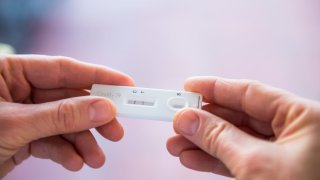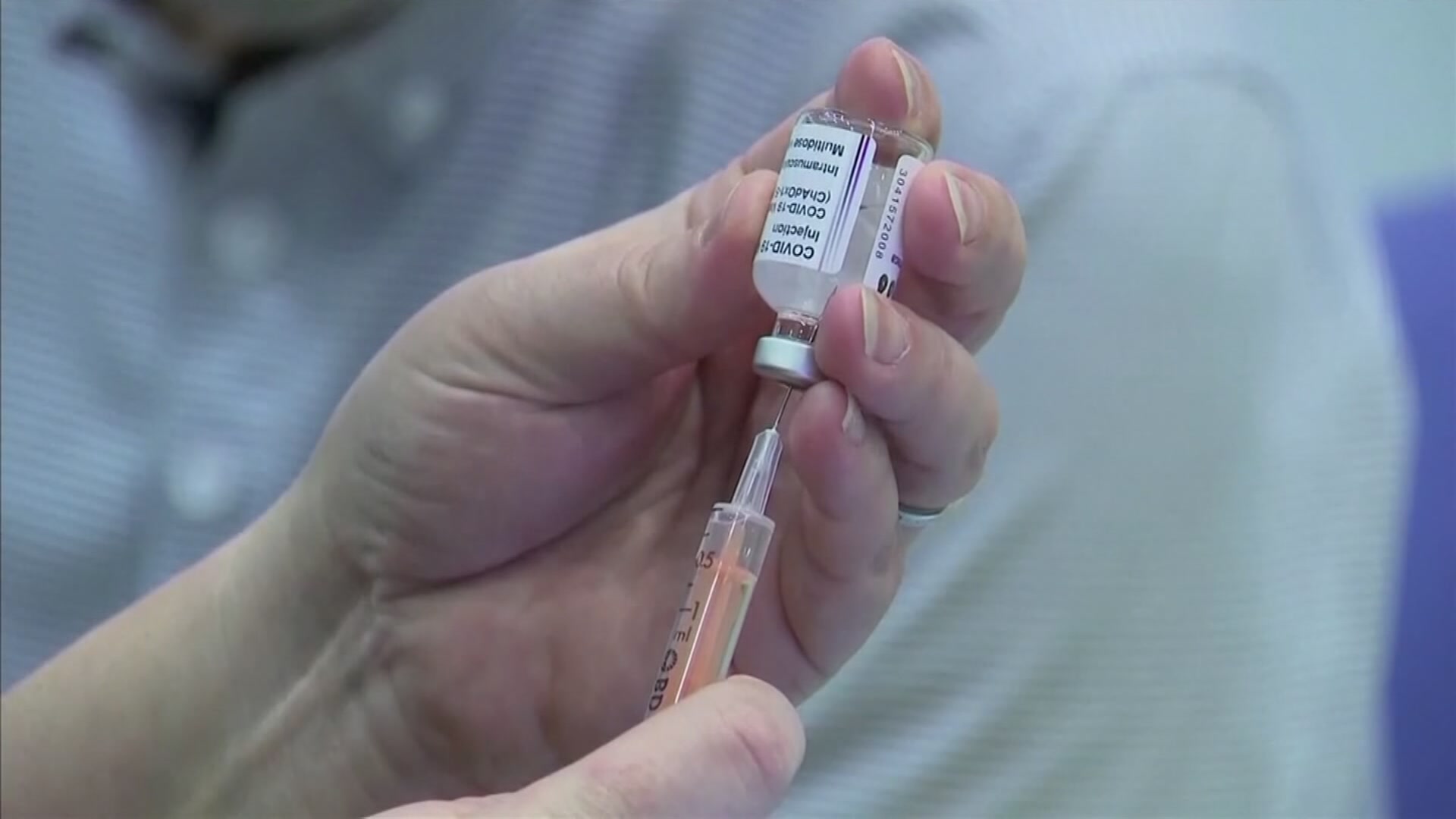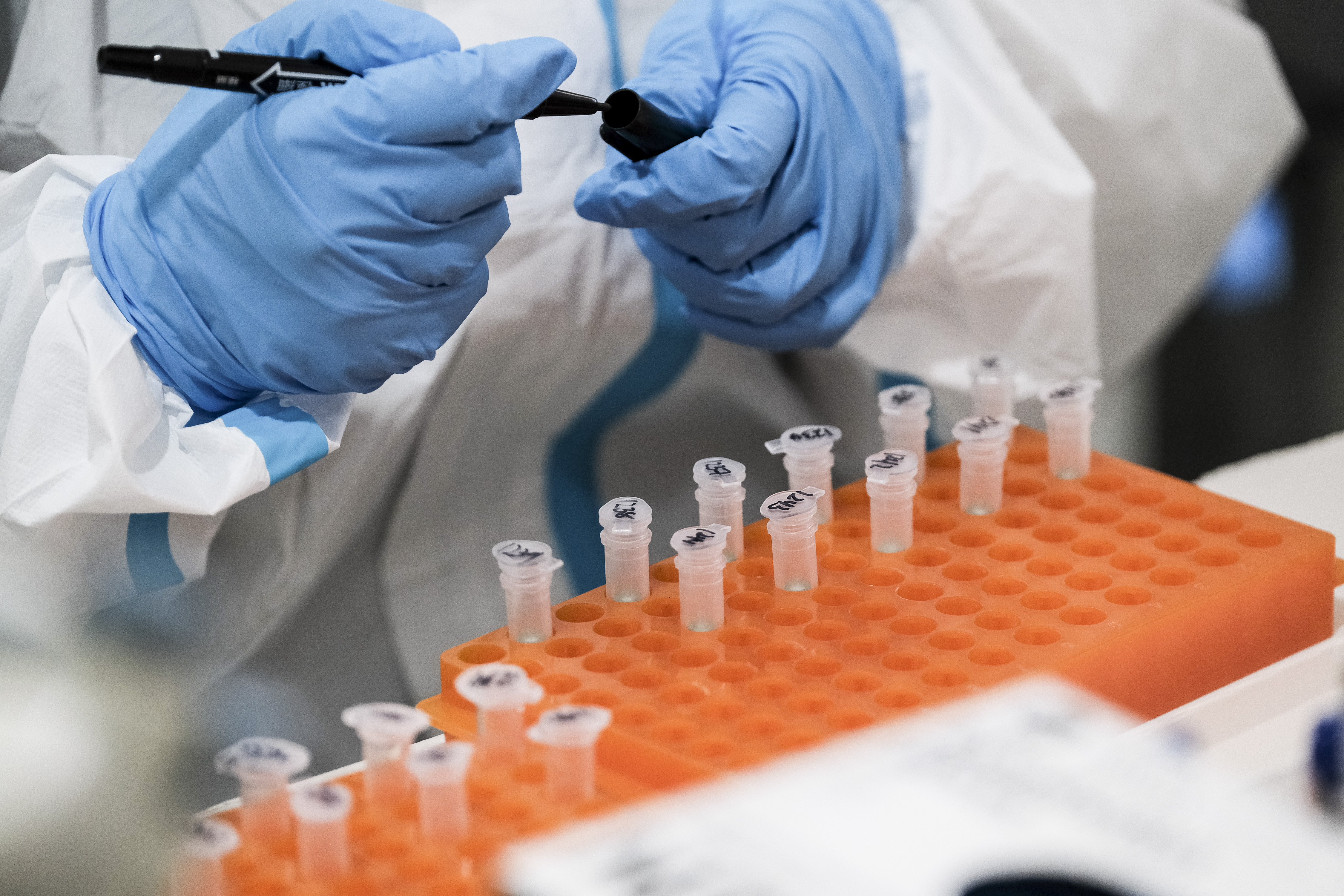
With many expected to gather this week for the Thanksgiving holiday and health officials warning of an uptick in COVID hospitalizations and other viruses, when is the right time to test, which symptoms should you watch for and what are the guidelines if you test positive?
According to the latest data from the Centers for Disease Control and Prevention, hospitalizations related to COVID have gone up by 16.8% in recent weeks in a four-county area that includes McHenry, Lake, DuPage and Cook Counties.
Data shows that there were a total of 383 new hospital admissions related to the virus during that time.
Feeling out of the loop? We'll catch you up on the Chicago news you need to know. Sign up for the weekly Chicago Catch-Up newsletter here.
Residents are being urged to take precautions ahead of holiday gatherings, wearing masks when necessary and testing for COVID if they feel ill. And the federal government has expanded the number of tests households can get mailed to them for free this holiday season.
Here's what to know:
When should you test?
Those who have symptoms are urged to take a COVID test as soon as possible, though officials continue to caution that a negative at-home test may not be as reliable as a positive one.
"If your antigen test is negative, take another antigen test after 48 hours or take a PCR test as soon as you can," the CDC states.
Those who don't have symptoms but may have been exposed should wait five days after exposure to take a test, according to the CDC guidance.
Some experts say you could test even earlier, but most recommend to continue testing through day five if those tests are negative.
“I would say the best rule of thumb is to start testing three days after exposure, and if you’re negative, test again on day four or five,” Dr. Michael Mina, a COVID testing expert and former professor of epidemiology and of immunology and infectious diseases at the Harvard T.H. Chan School of Public Health, told NBC News.
If I test negative does that mean I'm in the clear?
Those who were exposed and have symptoms are urged to continue testing for several days.
PCR tests can also pick up lower levels of the virus and would offer a more accurate determination for those looking for one.
The steps for what to do if you test negative can depend on symptoms, however.
If you have symptoms:
The FDA recommends "people who get an initial negative result on an antigen test, take at least one more test 48 hours later."
"Take a third test, 48 hours after the second, if the second test was negative and you don’t have symptoms. Self-tests are more likely to detect the virus if you have symptoms," the guidance states.
You may also want to consider contacting a healthcare provider to check for additional tests for other illnesses.
If you were exposed to someone with COVID-19, but don't have symptoms:
The CDC recommends if you test negative at least five days from your exposure that you repeat the test again 48 hours after your first test.
"If both tests are negative, then repeat testing after another 48 hours for a total of three tests," the guidance states.
What if you test positive? Does that mean you're contagious?
The answer is, "likely," especially with at-home tests,
According to the CDC, "self-tests detect current infection" and a positive result means "the virus was detected and you have an infection."
Do at-home tests work with the latest variants?
It is believe the at-home tests are still effective against the newer COVID variants.
“We’ve actually never seen a deterioration in accuracy of the tests, given any new variants,” Mina told NBC News. That’s because the mutations are happening in a different part of the virus than the portion detected by rapid tests. Almost every rapid test that’s authorized in the U.S. and globally detects a protein called the nucleocapsid, which is stable and just doesn’t, hasn’t seen a lot of mutations."
Most mutations so far have instead occurred in what is known as the spike protein.
Check the expiration dates
While many Americans may have unused tests in their homes, it's important to check the expiration dates, experts say.
The Food and Drug Administration has extended the expiration dates of many popular at-home test products, which means some such kits may still be safe to use, CNBC reports. You can check expiration dates for each brand using a page on the FDA's website.
Are COVID tests free?
Beginning on June 1, the government halted its free at-home test deliveries, but that program resumed once again at the end of September.
Orders for free tests opened back up on Monday, and will continue as long as supplies exist.
All households are eligible to order up to four free at-home COVID tests, but those households that did not order them earlier this fall can receive up to eight, according to the government.
Tests can be ordered at COVID.gov.
Additional tests are still available for uninsured individuals and underserved communities through a series of federal outreach programs, which can be found via the CDC’s website.
What are the symptoms?
If you do suspect you've contracted COVID, here are some symptoms you might experience:
- Cough
- Sore throat
- Runny nose
- Sneezing
- Fatigue
- Headache
- Muscle aches
- Altered sense of smell
Recently, a Chicago-area doctor said she's noticed shifts in the most common symptoms her patients have reported when contracting the COVID-19 virus this fall.
Dr. Chantel Tinfang, a family medicine physician with Sengstacke Health Center at Provident Hospital of Cook County, noted that many of the recent cases she's seen have reported less of the fever, body aches and chills, and more presented with sore throat, fatigue and coughing.
"We still see some patients experiencing decreased appetite, a loss of taste or smell. So it kind of depends," she said. "One patient was just very, very tired. Like she couldn't really do much. And that's when you know ... it's different. It's not just coughing and shortness of breath. We still see that though."
She suggested consulting with your doctor if your symptoms don't begin to improve outside of the recommended isolation period.
As for timing, symptoms can last for several days, but in some cases, even longer.
"Some people who have been infected with the virus that causes COVID-19 can experience long-term effects from their infection, known as Long COVID or Post-COVID Conditions (PCC)," according to the CDC.
Such symptoms can last for weeks and possibly even years.



